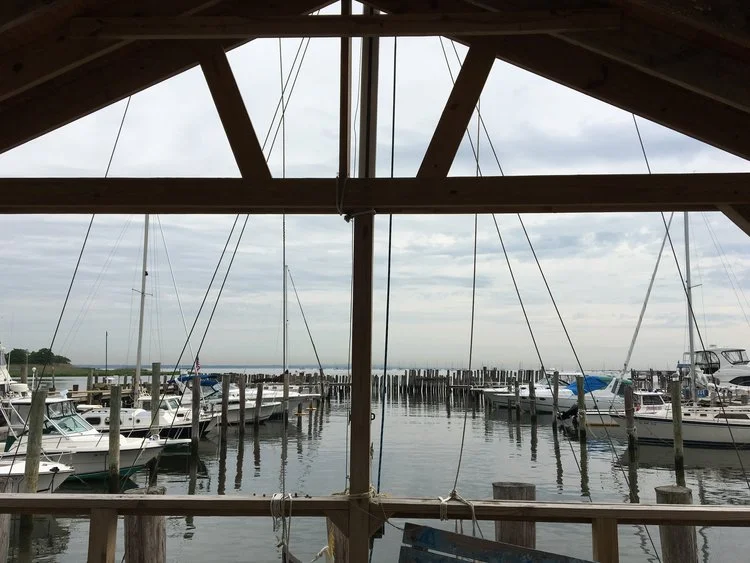Trawling Destination: Raritan Bay, Keyport, NJ
Departure Point: Pederson's Marina
TRAWLS TESTED: HARDWARE & BUOY
Our first day out on the water this summer was with two of several trawls to be offered by our team here at Testing the Waters. We could not have done this first phase of testing without NY/NJ Baykeeper who generously provided us the boat and people power to make this first outing happen. This organization does really important work that aims to protect, conserve and rehabilitate New York and New Jersey waterways. Make sure to check them out and get involved. We would like to thank Sandra Meola, Captain Pete Cangeloso, and field technician Mitch Mickley for their help and support.
Additionally our cross country support from 5Gyres has been essential to the entire project. What started as a project to create design drawings of their trawls for open source global disbursement, has led to the Testing Our Waters project. The Hardware trawl we tested this expedition was in fact designed by 5Gyres cofounder, Marcus Eriksen, on his return trip to LA from New York City.
Lastly we want to thank the Tishman Environment and Design Center of The New School for enabling us to launch our project with our first grant.
The goal of these excursions is to ascertain the ability of each trawl to remain level with the water surface while being pulled from the boat, and to ensure that the nets are holding onto the trawl (essential to trawling for microplastics successfully) and do not rip. With each excursion we look at how well the trawl remains parallel to the surface and captures debris.
Stepping up to the plate for testing this time are the Hardware Trawl--
... and the Buoy Trawl designed for Makers with 3D printing abilities.
First up: The Hardware Trawl goes into the water and we track our location...
Captain Pete kept us at 3 / 4 knots throughout each 15 minute test. The hardware trawl sunk a little bit and may need some adjustments to its design as a result but as a whole we were happy with how it performed. We logged our location and time and pulled it onto the boat.
When on deck of the boat, we thought the 3D trawl was working best, (perhaps grateful it didn't sink). It dove in and out of the water and looked as excited to be in the water as we were. This anthropomorphism did not a good trawl make however. When Professor Roth reviewed the footage to take a closer look at performance, he realized it had too much bounce to suit our purposes. Professor Roth has gone back to the drawing board with this design. Stay tuned for version 2.0.
We did find microplastics in our 2 successful hauls. They are extremely small and difficult to capture on an iPhone camera. Sandra Meola from NY/NJ Baykeeper said that they have have found microplastics EVERY TIME they have trawled for them. You may think that we found is not a lot, however you must take into consideration that what we ultimately found was from just 2 nets we trawled with, 15 minutes at a time. Considering how large Raritan Bay is, it is alarming that we found this much from just trawling for such a short amount of time in such a large body of water.
Ultimately, from a design perspective, the trip was a success and showed Professor Barent Roth and designer Aishwarya Janwadkar what adjustments need to be made for the 2nd iteration of these trawls.
We as a team came back to land with renewed purpose. We learned, and saw, that the environment is in fact not healthy. Field technician Mitch Mickley taught us that the large amount of jellyfish we were seeing in the water is an indicator of an environment in distress. Normally these jellyfish would have predators, but with sea temperature rising and pollution into the oceans increasing, ecosystems and animal behavior are changing. In our local waterways, jellyfish do well, their predators do not. This is a trend we see in many different locations: it’s often the animals that are harmful to humans that benefit from the negative impact human activity has on the environment.
We believe that with research and community building we can reverse this path. That is one of our goals at Testing Our Waters.









